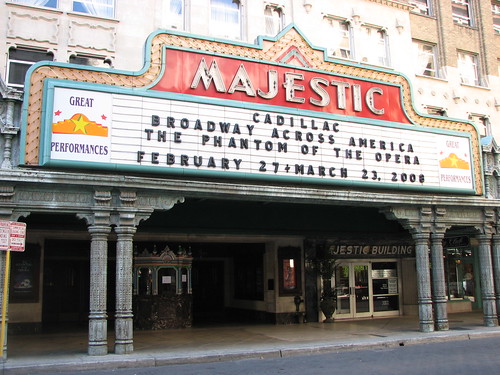Tulsa Zoning: June 2017 Archives
A friend asked me recently where I stood on the issue of design guidelines in zoning, particularly as it affects property rights and a proposed overlay district for downtown Tulsa. I referred him to a sampling relevant articles from the BatesLine archive, in which I discuss zoning generally and defend the idea of overlay districts such as neighborhood conservation districts, urban conservation districts, and historic preservation districts. I thought the links might be of broader interest:
- October 2004: The Three Rules of City Comfort: A review of David Sucher's book City Comforts and his three simple design guidelines that produce "city-ness"
- January 2005: Historic non-preservation: On the erosion of Tulsa's historic preservation districts for adjacent commercial development.
- April 2006: A free-market approach to redevelopment: Anaheim set design rules and removed use restrictions in a district, allowing piecemeal redevelopment, a more robust and sustainable approach than the usual approach of condemning property through eminent domain and contracting with a developer for one big, new development.
- April 2006: If I were the Zoning Czar: An overview of my philosophy on land-use regulation and its interaction with free-market economic principles.
- August 2006: Property owners owe Tulsans downtown preservation: An article supporting the CORE recommendations for downtown historic preservation. Tulsa taxpayers didn't invest billions in downtown Tulsa "to accelerate the conversion of downtown to an enormous surface parking lot." OKC leaders thought ordinances to protect downtown historic resources and a walkable urban fabric were a reasonable imposition on developers in light of MAPS public investment.
- March 2008: "The screams of the tyrannical minority": A rebuttal to then-City Council candidate Eric Gomez's op-ed on neighborhood conservation districts.
- March 2008: San Antonio Streetscapes: Photos from a visit to San Antonio, illustrating the principles of walkable urbanism, and details of the zoning ordinances that protect the city's walkable and historic core. (See above for an example.)
- May 2011: Historic preservation amendment deserves Tulsa Council support: Support for closing a loophole in the zoning code which would have enabled the erosion of HP districts.
- March 2016: Vision Tulsa, Helmerich Park, and strip malls along the Arkansas River: Defending the idea of an overlay district for the Arkansas River corridor and describing similar districts in Oklahoma City.
